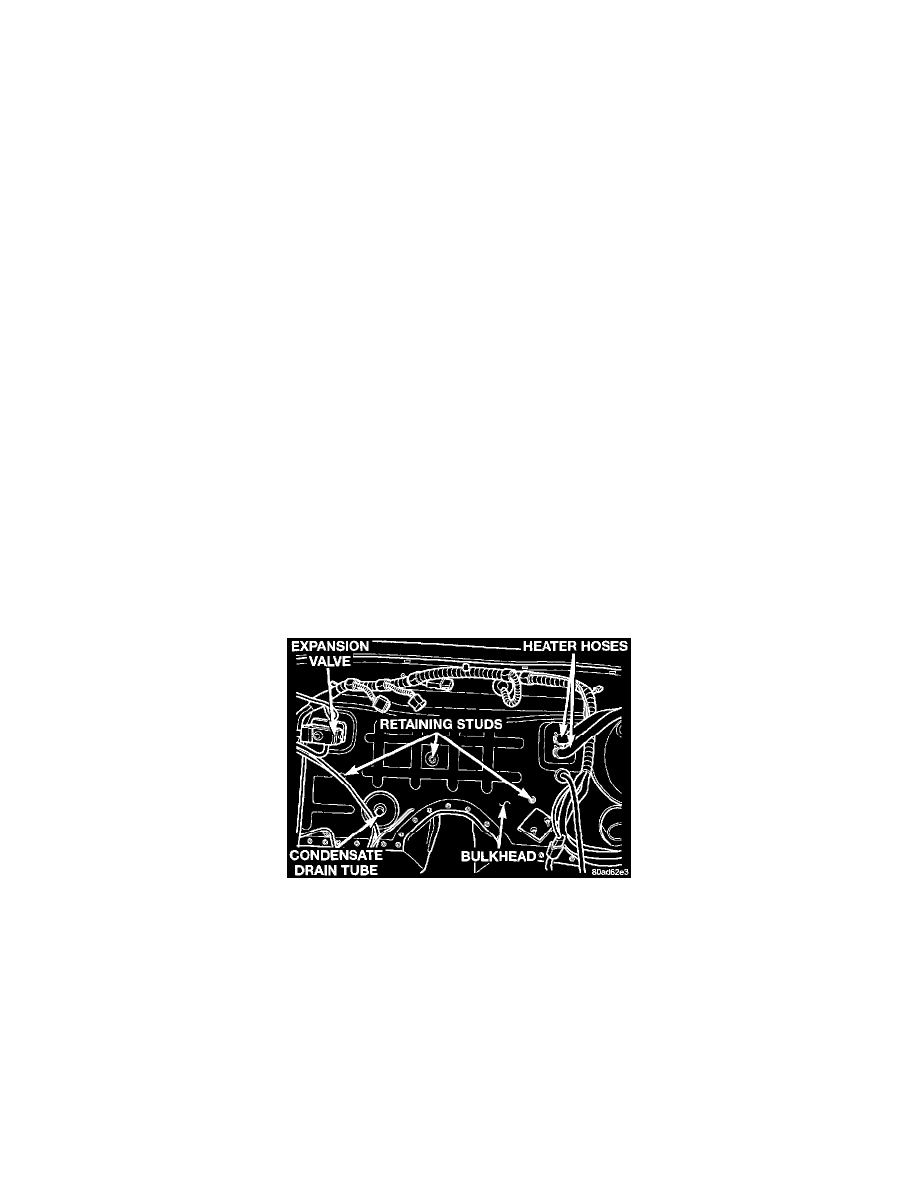Prowler V6-3.5L VIN G (1999)

Evaporator Case: Service and Repair
Heater-A/C Housing Removal and Installation
NOTE: The instrument panel must be removed in order to remove the Unit Housing.
WARNINGS:
-
The R-134a refrigerant system must be recovered before servicing any part of the refrigerant system.
-
Avoid breathing a/c refrigerant and lubricant vapor or mist exposure may irritate eyes, nose and throat. Use only approved service
equipment meeting SAE requirements to reclaim R-134a systems. If accidental system discharge occurs, ventilate work area before
resuming service.
-
R-134a service equipment or vehicle a/c system should not be pressure tested or leak tested with compressed air. Some mixtures of air and
R-l34a have been shown to be combustible at elevated pressures. These mixtures are potentially dangerous and may result in fire or
explosion causing injury or property damage.
REMOVAL
1. Disconnect battery negative remote cable. This must be done to prevent accidental airbag deployment.
2. Using an A/C recovery unit, remove all R-134a refrigerant from the A/C system.
3. Drain the engine cooling system.
4. Remove air cleaner snorkel and filter housing.
5. Disconnect heater hoses at the dash panel.
-
Plug the heater core inlet and outlet tubes to prevent antifreeze from spilling on the vehicle interior during removal.
-
If an appropriate plug cannot be found pull back carpet and use caution when removing unit.
-
Keep the heater tubes elevated to prevent spillage of coolant.
6. Remove A/C lines from expansion valve.
-
Refer to A/C Hose/Line Removal for complete procedure.
-
After removing lines cap the expansion valve openings and the A/C hose openings. This will prevent any dirt or moisture from entering the
refrigerant system during servicing.
7. Remove two screws attaching the expansion valve and remove valve.
CAUTION: The lubricant used in this air conditioning system absorbs moisture readily (similar to brake fluid). Do not leave any portion of the
system open for extended periods of time.
8. Remove instrument panel.
Fig 43 Bulkhead Panel Studs
9. Remove bolts securing Heater-A/C housing to cowl.
